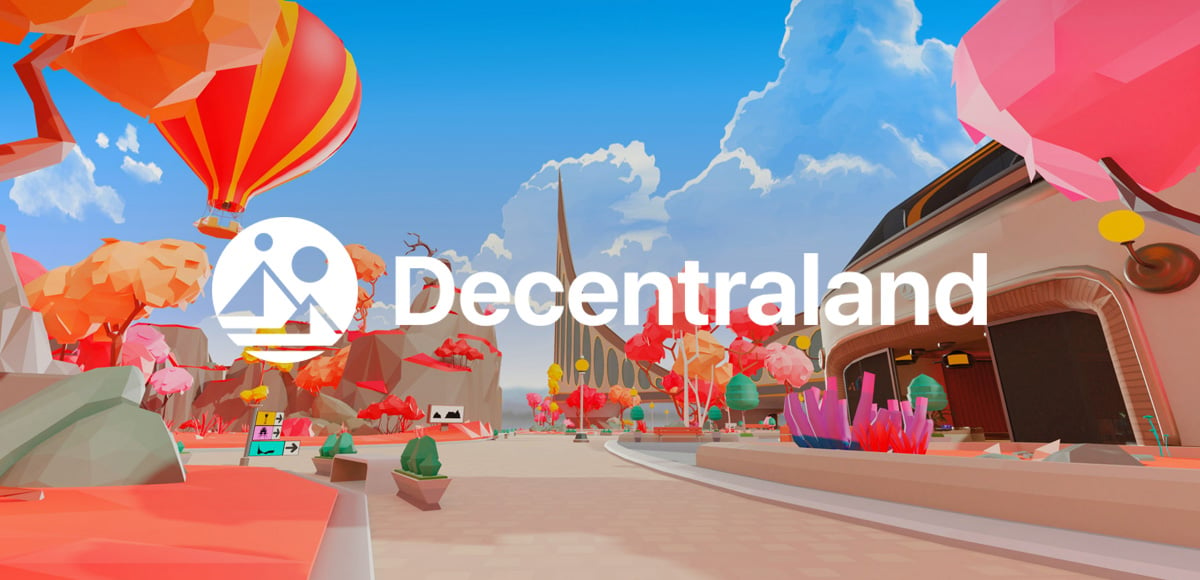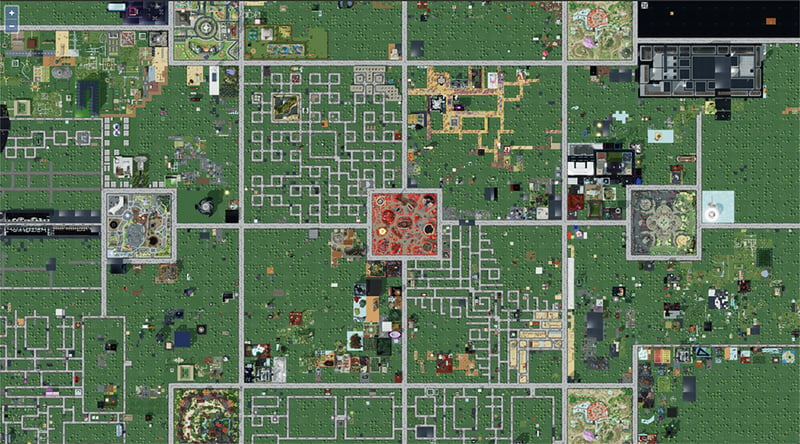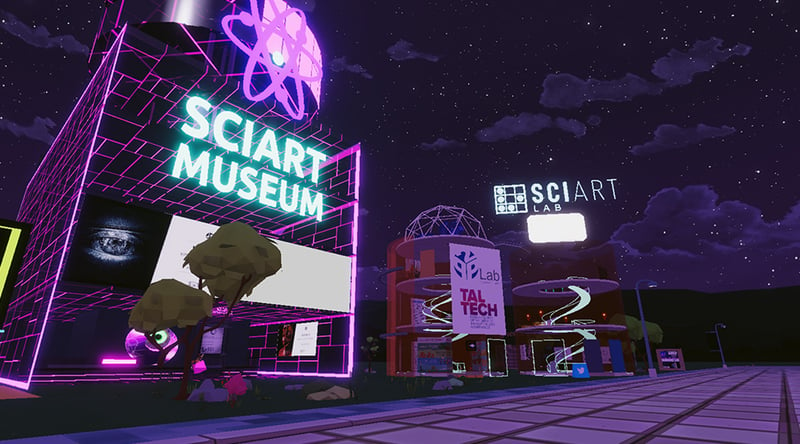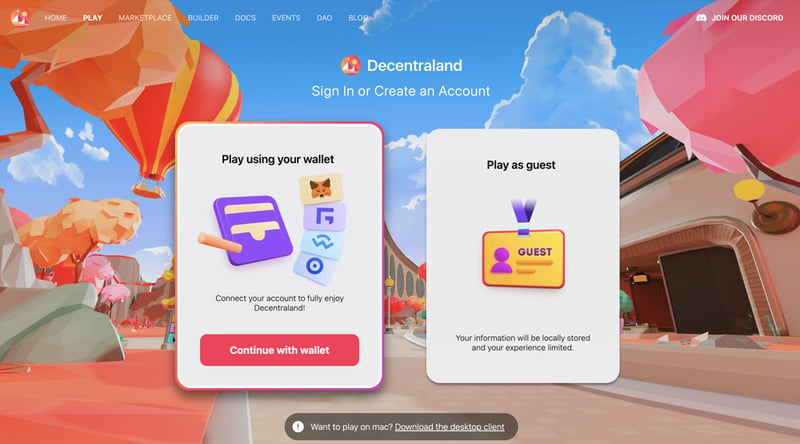
Meta-virtual worlds: An overview of Decentraland
Written by Brett Rakestraw
The first question that comes up when discussing the metaverse is generally, “what is the metaverse?” Right now, that’s not an easy question to answer. Depending on who you ask, the metaverse may just be a buzzword that never materializes or it may be a future virtual world with an economy rivaling the physical world. Others say we are already in the metaverse, and ubiquitous connectivity tools like Zoom are representations as such.
One of the more hotly debated topics swirls around the idea that the metaverse is, or will be, a system of interconnected virtual world platforms that we spend our days immersed in through VR headsets. And, there are loads of companies, large and small, all clamoring to build the virtual cities of our fully digital future. Major players like Roblox and Fortnite are sometimes cited here, but while they claim many millions of highly engaged users, they currently lack much of the open infrastructure that metaverse proponents are pushing for.
On the other hand, new platforms like The Sandbox and Decentraland offer more open access and some levels of interoperability that could serve as foundational models for the eventual metaverse.
Today, we’ll take a look at Decentraland, what it offers, what it’s missing, and how brands are taking advantage of the platform for activations in the nascent metaverse and web3.
Decentraland was first pitched in 2017 as a virtual world platform on the blockchain. The founders set out to build a democratized platform controlled by the participant land owners and guided by a DAO called the Decentraland Foundation. Along with the platform, the developers launched a crypto token called MANA to be used as a currency powering the ecosystem.

Decentraland map overview
The 90,000+ land parcels were auctioned off for around $20 each in 2017 with the MANA token trading at about $.02 per coin. Interest in the platform was high enough to warrant a quick sell out. And, by the end of 2021, with metaverse real-estate in full hype-mode, MANA coins reached an all-time high of $5.85 (a 29,000% increase) and land parcels were selling for tens of thousands of dollars a piece. One investment group reportedly spent $2.4 million for a collection of 116 parcels on that platform.
In 2022, prices have dropped significantly, with MANA coins trading just under $1, and the least expensive land parcels selling for around $3,000 at the time of writing.
The Owner Experience
Owners of land parcels in Decentraland have complete control over the scenes they create and publish on their property. With Decentralized operating as a DAO, they don’t have the ability to boot anyone from the system in the same way a platform like Facebook or YouTube does.
The Decentraland content policy only limits a narrow swatch of content like depicting illegal activity, hateful content, or libelous content. So, the idea of a homeowner’s association doesn’t exist in this world. A park scene might be built next to a giant neon monolith with a floating oasis across the street. Since many of the parcels in Decentraland have yet to be developed, the future experience may look quite a bit different than it does today.

A typical scene in Decentraland (Night View)
Land owners can quickly publish and un-publish a scene, changing out the experience as often as they like, as long as it fits the somewhat limited technical requirements of the current platform with regards to the 3D models that make up the scenes.
One of the current, and potentially permanent shortcomings of Decentraland is the limited performance. Unlike the technical powerhouses that are Fortnite and Roblox, Decentraland can sometimes feel clunky with less server power and the lack of a dedicated team fine-tuning system efficiencies.
For these reasons, owning and operating a property in Decentraland can be both empowering and frustrating. Empowering, as owners get way more control of their own experiences and because they have the right to sell ( or even rent) their property in an open marketplace at any time. But, frustrating as the experiences available can be somewhat limiting and not nearly as close to the ‘Ready Player One’ experiences that we’ve been looking for.
The User Experience
Since Decentraland is built on web3 principles and blockchains, users sign in using a digital wallet like MetaMask instead of signing up with an email address and username. There is a guest play option as well that requires no sign in. But, this can limit the overall experience on the platform.

Decentraland sign-in
Once a user signs in with a wallet, any relevant NFTs like digital wearables can be equipped. The NFT structure on the platform also allows for token-gated experiences that can only be accessed by having specific NFTs in a user’s wallet. As an example, an operator could put on a virtual concert that requires an NFT ticket to attend. By having that ticket in their wallet, a user could walk right into the concert space, while others would be prohibited from entering. While this concept hasn’t fully matured, it gives a peek into how access will potentially be controlled in our metaversal future.
Most experiences in Decentraland are completely open to the public and easily explorable by walking around the giant landscape or by teleporting on the map. It can be fun to randomly walk around looking for experiences to try, but with the limited supply of published experiences today, the ability to teleport across the map is essential.
Many people say the metaverse won’t be a game, but today Decentraland feels a lot more like a game than an immersive, connected experience amongst friends. Of course, other proto-metaverses like Fortnite and Minecraft are games built specifically for gaming experiences. This is where Decentraland can feel underwhelming to a traditional gamer. While the user base isn’t deep enough for rich community activities, the platform isn’t built for hard-core gaming either.
If Decentraland is going to have staying power as the metaverse begins to mature, its landowners need to create more compelling experiences, and the foundation needs to push the technical limits of the platform. Decentraland has plans to be ported for VR headsets, but today it’s only accessible from the web or as a stand alone desktop application for Windows and Mac OS.
Outside of the platform experiences, Decentraland also has a marketplace for digital goods and wearables. Anyone can create a wearable to be considered for the marketplace, and since the wearables are NFTs, they can be purchased and traded across many different marketplaces.
While a wearable NFT created today may only be playable in Decentraland today, that same NFT may be usable on other platforms in the future. Decentraland exercises no control over interoperability and doesn’t seek to limit what is possible here. The openness of the platform and the web3 fundamentals do give Decentraland a leg up in the interoperability category.
The Brand Experience
Today, most of the draw within Decentraland comes from brand activations on the platform. As brands have eagerly looked for opportunities to dip a toe or plant a flag in the metaverse, Decentraland has become a primary source of activations. Time will tell if Decentraland remains a destination for brands, but today it dominates as a brand activation platform.
Everyone from Coca-Cola to Netflix have launched pop-up experiences on the platform. Many experiences revolve around brand education, special event promotion, and of course giveaways. Digital swag is definitely a thing, and brands should consider how they’ll be rewarding loyalists with digital goods in the future.
While pop-ups are the norm, several brands have set up permanent shop on the platform, building fixtures like Sotheby’s virtual auction house and Vice’s virtual headquarters.

Sotheby's virtual auction house in Decentraland
Many brand experiences include a wearable or a POAP (Proof of Attendance Protocol) that lets a visitor prove they were there in the beginning (likely before most of the rest of the world). In fact, visitors in Decentraland today really are pioneers in this space. Average daily users on the platform are in the thousands, as opposed to the millions who visit Roblox experiences daily.
But for brands, creating an experience in Decentraland is more about experimentation and good old PR. While a brand may not get a million visitors, they will definitely get attention. And, if executed properly, they’ll gain credibility amongst the early adopters who drive momentum towards a more fully realized metaverse.
The Future Experience
Decentraland has pioneered the framework for an open-standard virtual world with property rights backed by NFTs and blockchains. It makes sense that the platform is extremely popular today for brand activations even when the user base is tiny compared to the big corporate competitors. But, the great achievement launched in 2017 isn’t going to look as enticing in a mature market without continued development and a strong community of backers and advocates.
The beauty of the vision for the open metaverse is that platforms don’t necessarily need to lose in order for others to win. There really could be a place for everyone. Maybe Decentraland will be that place for many of the millions of people who have yet to discover it, or maybe it'll be the perfect hang out for a niche audience. Either way, it's up to the property owners and community to decide as much, if not more, than the people who created the platform in the first place.
Key Takeaways
The metaverse should be open
We're used to siloed web and app experiences, keeping us locked in to the platform. Decentraland is an early pioneer of open standards and interoperability, built on a web3 backbone, a key to building a cohesive metaverse.
You buy it, you own it
Decentraland gives full digital ownership rights to land buyers, allowing them to build what they want (mostly) and letting them sell their property on the open market. NFTs ensure this process stays valid.
Brands are here today
While some might consider Decentraland to be less exciting than heavily funded gaming worlds like Fortnite, plenty of brands are experimenting in Decentraland all of the time. It's become a playground for brand activations and experimentation.
Room to grow
Decentraland has paved the way for the next set of meta-virtual worlds, but they have plenty of room to grow, and a need to do so in order to maintain relevance over the long haul.
Topics: brand promotions, creative strategy, future of creativity, brands
